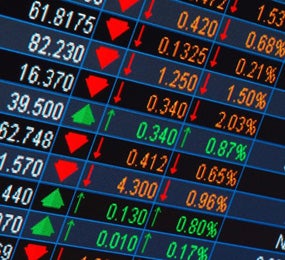Results 1 to 13 of 13
Threaded View
-
18th Mar 2018, 04:04 PM #1
 Popular Forex Currencies
Popular Forex Currencies

The currency markets are the largest and most actively traded financial markets in the world with a daily trading volume of more than $5.1 trillion (Triennial Central Bank Survey 2016). The majority of this trading is concentrated in the world's major financial centers such as London, New York and Tokyo. Large institutional investors such as banks, multinational corporations, hedge funds and central banks constitute the majority of the market activity. To knowledgeably compete in this overwhelmingly institutional marketplace, individual investors need to assimilate as much information as possible. This tutorial provides an overview of basic foreign currency (forex/FX) trading strategies, the markets for those strategies, and an examination of some of the most popular currencies traded.
How do currency transactions work?
Each transaction in the currency market involves two different trades: the sale of one currency and the purchase of another. The two currencies involved in the trade are known as a pair. While it is possible to swap virtually any currency for another, the majority of trading occurs among a handful of popular currency pairs. (For more on this topic, check out Reading a Forex Quote)
Currency
Market Share USD 87.6% EUR 31.3% JPY 21.6.3% GBP 12.8% AUD 6.9% CAD 5.1% CHF 4.8% CNY 4% SEK 2.2% MXN 2.2% NZD 2.1% SGD 1.8% HKD 1.7% NOK
1.7% KRW 1.6% Emerging Market Currencies 21.2%
The chart shows the most heavily traded currencies and their market share. Total market share adds up to 200% because each transaction involves two currencies (ECB: BIS Triennial Survey 2016).Figure 1: The most heavily traded currencies and their market share Source: BIS Triennial Survey, 2016
USD
As the world's reserve currency, the U.S. dollar is the most actively traded currency, and pairs involving the dollar make up the majority of transactions. In fact, the U.S. dollar was on one side of 88% of all trades in April 2016, up slightly from 87% in April 2013. Therefore, this tutorial examines the trading relationships between the U.S. dollar and several of its chief counterparts, including the euro, the Japanese yen, the British pound, and the Swiss franc. The tutorial also examines other popular trading pairs involving the U.S. dollar and the commodity currencies – those of Canada, Australia, and New Zealand.
Although the average trader will likely participate only in trades involving the U.S. dollar, this tutorial includes a discussion of cross rate pairs – pairs of significant international currencies that are not the U.S. dollar. Additionally, because emerging markets form an important part of the global financial system, this tutorial also examines the unique challenges facing individuals interested in trading emerging market currencies.(For more information, read The Foreign Exchange Interbank Market.)
Before the discussion of popular trading pairs, a brief analysis describes some of the instruments, concepts and strategies that should be familiar to investors trading in the currency markets. (For a quick refresher, check out: Forex Market Basics)
EasyMoney Reviewed by EasyMoney on . Popular Forex Currencies https://i.investopedia.com/inv/topics/images/active-trading-lrg.jpg The currency markets are the largest and most actively traded financial markets in the world with a daily trading volume of more than $5.1 trillion (Triennial Central Bank Survey 2016). The majority of this trading is concentrated in the world's major financial centers such as London, New York and Tokyo. Large institutional investors such as banks, multinational corporations, hedge funds and central banks constitute Rating: 5
Sponsored Links
Thread Information
Users Browsing this Thread
There are currently 3 users browsing this thread. (0 members and 3 guests)
Similar Threads
-
[GET] Learn to Trade Forex and Stocks: From Beginner to Advanced
By AliKashif7 in forum Udemy 100% FREE for LIMITED TIMEReplies: 2Last Post: 13th May 2019, 02:57 PM -
Mining of crypto-currencies on P2pool
By kryptonite in forum Mining and PoolsReplies: 0Last Post: 13th Jan 2016, 02:42 PM

















 Reply With Quote
Reply With Quote



 Staff Online
Staff Online
Shopsocks5.com - Check Socks5...
[Free Trial] https://shopsocks5.com/ - Service...